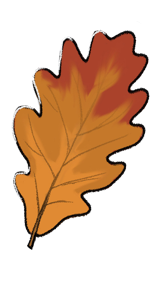Members of the kingdom Apicomplexa are parasitic protists responsible for many animal and human diseases. Many of them have complex life cycles involving more than one host and include Babesia, Coccidia, Eimeria, Toxoplasma and Plasmodium. They are able to reproduce by producing a burst of spores.
More information
More information
Related categories 5
Sites 11
Information from MicrobeWiki on this phylum of parasites, their description and significance, genome structure, cell structure, metabolism and ecology.
Information on this diverse group of over 5000 species including the coccidia Cryptosporidium, Isospora, Cyclospora, Toxaplasma, Babesia and Theileria which can all infect humans.
Article from Wikopedia on this large group of protists which are unicellular, spore-forming and exclusively parasitic on animals.
Animation showing the life cycle of the single-celled organism of the genus Eimeria that causes this disease.
Information on the complex life cycle of the malarial parasite and a project to construct a full length cDNA genome sequence for Plasmodium falciparum.
Discussion of this group of parasitic, pathogenic protists, formerly considered to be Sporozoa but now grouped on the basis of structural features including an apical complex of microtubules within the cell.
Information on the blood parasites of the genus Plasmodium that can infect humans, with a diagram and information on their complex life cycle.
Laura Augustine provides information on the malarial parasite, its classification, habitat, adaptation, nutrition, reproduction and methods of prevention and treatment.
Research project by Christopher Parks on this parasite including its classification, host environment, reproduction and adaptations.
Information from Wikipedia on this parasitic protozoan which can cause toxaplasmosis, including the life cycle of the parasite.
Information on a project to construct a Toxoplasma full-length cDNA library. Also information on the life history of the parasite in several host species.
Information on the blood parasites of the genus Plasmodium that can infect humans, with a diagram and information on their complex life cycle.
Animation showing the life cycle of the single-celled organism of the genus Eimeria that causes this disease.
Research project by Christopher Parks on this parasite including its classification, host environment, reproduction and adaptations.
Laura Augustine provides information on the malarial parasite, its classification, habitat, adaptation, nutrition, reproduction and methods of prevention and treatment.
Information on this diverse group of over 5000 species including the coccidia Cryptosporidium, Isospora, Cyclospora, Toxaplasma, Babesia and Theileria which can all infect humans.
Information on the complex life cycle of the malarial parasite and a project to construct a full length cDNA genome sequence for Plasmodium falciparum.
Information from Wikipedia on this parasitic protozoan which can cause toxaplasmosis, including the life cycle of the parasite.
Information on a project to construct a Toxoplasma full-length cDNA library. Also information on the life history of the parasite in several host species.
Article from Wikopedia on this large group of protists which are unicellular, spore-forming and exclusively parasitic on animals.
Information from MicrobeWiki on this phylum of parasites, their description and significance, genome structure, cell structure, metabolism and ecology.
Discussion of this group of parasitic, pathogenic protists, formerly considered to be Sporozoa but now grouped on the basis of structural features including an apical complex of microtubules within the cell.

Last update:
October 15, 2023 at 5:25:13 UTC

Check out
Computers: Usenet
- Recently edited by stegozor
- Recently edited by stegozor